Life
by Amanda Chatel
Caroline Wurtzel/Bustle
No matter how much you might love sex, sometimes exhaustion can take over and you can find yourself in the mood but sleepy. What follows is the debate of whether or not to even do it. On one hand, you know it's going to feel great and it may even help you sleep. On the other hand, you know it's going to require at least some effort on the part of both you and your partner, so do you really want to do it or should? Well, it depends on just how much you want it and how much you just want call it a day and go to bed instead.
But for those who just can't miss out on the opportunity to get laid, for whatever reason (you're being sent to Mars tomorrow, perhaps), there is a way to get what you want and not have to exert too much effort. How? It's all about choosing the right positions that correspond with your exhausted mind and body. Here are nine of those positions, from modified doggy to a sofa straddle that will allow you to get off without too much energy before drifting off to dreamland. You're welcome. (Remember, these positions work for two women as well.)
Caroline Wurtzel/Bustle
How to do it: Since you're already exhausted, you might as well start by lying flat on your belly. From here, have your partner climb on top, with what limited energy they have, and enter you from behind. Then, as you would with traditional doggy style, get to grinding.
Why it's great for when you're exhausted: There's relatively not much movement here and, when you're done, you can both just roll over and go to sleep.
Caroline Wurtzel/Bustle
How to do it: While facing each other, lift your leg, drape it over your partner's hip, and have him enter you from there.
Why it's great for when you're exhausted: If you and/or your partner are the types who prefer to sleep on your sides, then this is a great position. Once you're done, you're already set up to drift off to sleep.
Caroline Wurtzel/Bustle
How to do it: Have your partner sit on a sofa, then, as you would with the modified on top position, straddle them, lowering yourself down onto them.
Why it's great for when you're exhausted: Where's the first place you go when you get home and you're exhausted? The couch. Why? Because unless you keep your bed in the living room, it's the first comfy thing you see. Since that's the case, you and your partner are probably on the couch, therefore this works.
Caroline Wurtzel/Bustle
How to do it: While on your sides, facing away from each other and in the cuddle spooning position, have your partner enter you from behind.
Why it's great for when you're exhausted: When it comes to being tired or lazy, this is always my go-to position. It feels good, it's cozy, and once you've both climaxed (which might require some reach-around clitoral stimulation), you don't even have to move a muscle to go to sleep.
Caroline Wurtzel/Bustle
How to do it: First, lie down in bed (which is what you want to do anyway), then have you partner enter you from above, while keeping parallel to your body.
Why it's great for when you're exhausted: Missionary is pretty much the most basic position there is. Granted, you can spice up missionary if you're in the mood, but if you're not it's an easy position to get into and out of so you can get some shut-eye.
Caroline Wurtzel/Bustle
How to do it: Find a comfy place with your partner, then proceed to get yourself off while they do the same.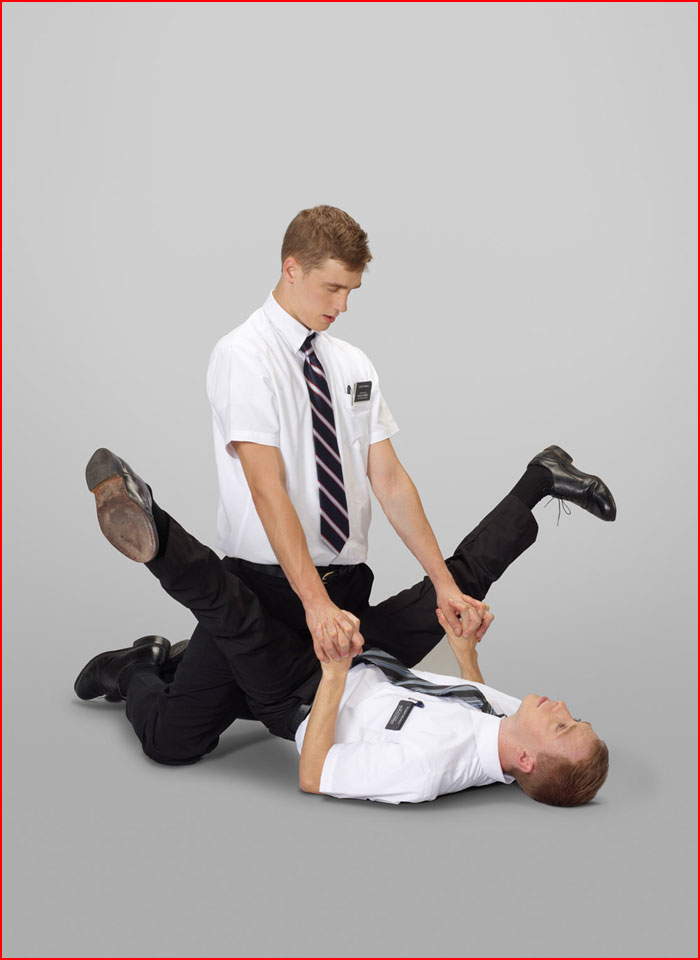
Why it's great for when you're exhausted: One of the best things about masturbation is that you don't have to worry about pleasing someone else. Don't get me wrong — it feels amazing to give someone else pleasure, but when you're wiped out and you just want to orgasm, mutual masturbation is your best bet.
Caroline Wurtzel/Bustle
How to do it: Drape yourself over the back of the sofa and have your partner enter you from this angle. It's like doggy style, but with a sofa twist.
Why it's great for when you're exhausted: As is the case with the sofa straddle above, there's a good chance that you and your partner are already on the couch, so it's easy to go from sitting on the couch to draping yourself over the back of the couch. It's a simple movement that gets you into a great position that's ideal for the exhausted people out there.
Caroline Wurtzel/Bustle
How to do it: With your partner on their side, facing you and holding their head up for support, align your body up with theirs so it's perpendicular.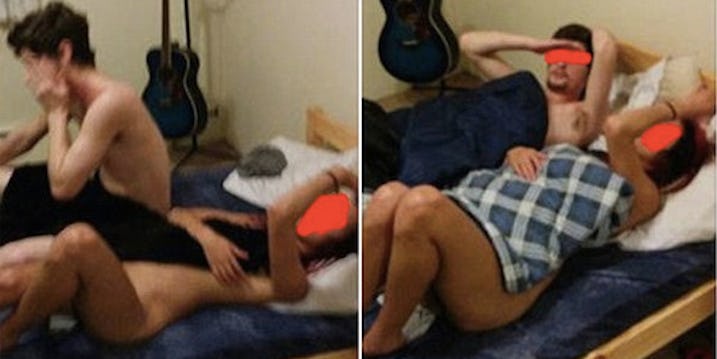 Next, drape both your legs over their hips, while pulling your vagina into their groin so they can penetrate you.
Next, drape both your legs over their hips, while pulling your vagina into their groin so they can penetrate you.
Why it's great for when you're exhausted: I have to say that of all the positions out there, this has to be one of the most ideal if you're physically exhausted and just don't want to move. Not only is there very limited movement, but if you're not so tired that you need to sleep right away, then this is the loungy position you want.
Caroline Wurtzel/Bustle
How to do it: Whoever is the most exhausted gets to sit in the chair, while the other partner proceeds to perform oral. Fair, right?
Why it's great for when you're exhausted: Nothing says relaxation like getting some amazing head from your partner while you just sit there and enjoy it. Nothing. Then it's time for a nap.
Being exhausted doesn't have to stand in the way of an orgasm, that is if you're really craving one. (If you're tired and *not* in the mood, then get some shuteye ASAP!) But if sex is on the menu before sleep, try one of these nine positions that will give both you and your partner what you want.
(If you're tired and *not* in the mood, then get some shuteye ASAP!) But if sex is on the menu before sleep, try one of these nine positions that will give both you and your partner what you want.
Sex & Relationships
Time to properly embrace sleepy sex.
by Lea Rose Emery and Carolyn Steber
Updated:
Originally Published:
blackCAT/E+/Getty Images
Humans can be chock full of conflicting emotions. We want to go to yoga, but we also want to sleep in. We want to make dinner, but we also really love take-out. And we often want to have sex but are tired at the same time — you know, that lazy in-between where you don’t really feel like leaving the duvet, but you're still in the mood.
Well, fear not. While it might be tough to muster the strength to go to yoga, you can definitely have great sex, even when you're out of energy. In fact, sleepy sex can still be great sex, Marla Renee Stewart, MA, a sexologist and relationship coach, tells Bustle, especially since fatigue often takes the pressure off of performing.
When you're in a "hazy," half-awake state, she says sex can feel extra intimate, as you'll be focused on the sensations more than anything else. Of course, it's important to think about the sex positions that'll be easiest to do, too. To properly embrace sleepy sex, you won't want to be flailing around or maneuvering in a way that requires a lot of strength or effort.
Luckily, there are plenty of options that are perfect for a lazy Sunday morning or a late-night romp. Here are the best positions to try, that won't require you and your partner to get out from under the covers.
How To Do It: With your partner on top, relax on your back with your legs slightly spread. Play around with different angles — like putting your legs closer together or further apart — to get more or less clitoral stimulation.
Play around with different angles — like putting your legs closer together or further apart — to get more or less clitoral stimulation.
Why It Works: If your partner isn't as tired, they can provide most of the motion, while you close your eyes and enjoy. Missionary is also great when you want to pull the blankets over you, to stay warm.
How To Do It: Get into a comfy spooning position, with your partner behind you. Position your hips slightly higher up than theirs — and use plenty of lube. Swirl your hips gently, and enjoy pressing against each other.
Why It Works: It's a position you can easily get into, without having to expend much energy. You'll also feel really warm and close while still experiencing moments of intensity, especially if you aim for some clitoral stimulation.
How To Do It: Face each other in bed and hook your top leg over your partner's hips, then pull them close while you guide them inside you. Use lube — or place a pillow under your hip — to find the right angle.
Use lube — or place a pillow under your hip — to find the right angle.
Why It Works: If spooning doesn’t feel intimate enough for you, this position might do the trick. It’s perfect for connecting with your partner — or for spicing things up with dirty talk — but you both get to be super comfortable.
How To Do It: Get into the traditional missionary position, then have your partner lift one of your legs onto their shoulder. If that feels comfortable, bring up the other leg to match.
Why It Works: Just because you’re tired doesn’t mean you have to miss out on intensity. This position allows for super deep penetration, while still being surprisingly relaxing. Talk about the best of both worlds.
How To Do It: While your partner curls up on their side, get on your back perpendicular to them, and rest your legs over their hips. Shimmy down and help guide them inside you.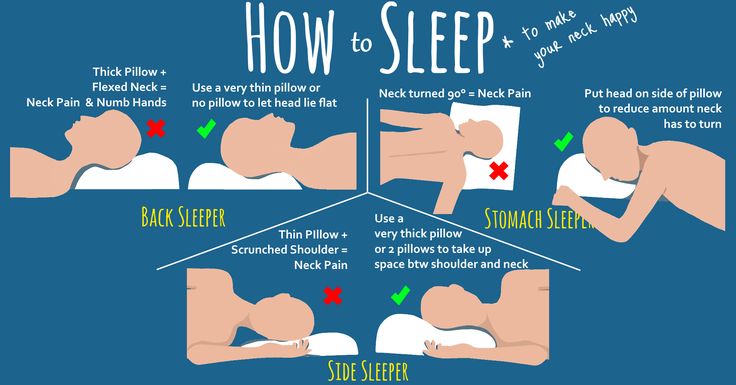
Why It Works: This unusual position allows both you and your partner to remain lying down, while still mixing things up. You'll have a nice view of each other, plus easy access for great clitoral stimulation. And you can even pull out a favorite vibrator, and let that do most of the work.
How To Do It: With your partner leaning back against the couch or headboard, swing a leg over and straddle them. They can lift their knees up to help hold you and bring you closer. If you'd like, you can even lean forward against the wall, for extra support.
Why It Works: This is a great position to relax into, but you still get to be in control. It’s intimate and intense — you can grind or bounce as much to your heart's content — but it’s less effort than traditional cowgirl, making it perfect for a lazy morning.
How To Do It: Cozy up next to each other on your sides, while lying head-to-toe. Part your legs so your partner can rest their head on your lower thigh, while you do the same. Then proceed to have oral sex. (If your neck starts to hurt, place a pillow under your head.)
Part your legs so your partner can rest their head on your lower thigh, while you do the same. Then proceed to have oral sex. (If your neck starts to hurt, place a pillow under your head.)
Why It Works: It's perfect when you don't want to move too much, but still want to make each other feel good. Side 69 also makes it easier to focus on all the amazing sensations of oral sex, so you can both get off — and then promptly fall asleep.
If you're sleepy but horny, pick a position that's cozy and comfortable. With the right moves, you can still have some great sex even when you don't feel like swinging from the rafters.
Expert:
Marla Renee Stewart, MA, sexologist and relationship coach
This article was originally published on
Moscow hosted the Fifth All-Church Congress of Diocesan Missionaries. The participants of the congress spoke about the main issues of the congress and about modern missionary service.
The participants of the congress spoke about the main issues of the congress and about modern missionary service.
Metropolitan John of Belgorod: The task of a missionary is to understand, explain and respond in a timely manner to the changed world
takes place in a different situation, when His Holiness Patriarch Kirill of Moscow and All Rus' and the hierarchy of our Church developed a strategy for attracting the laity to missionary activity, which was reflected in the Synodal definitions, in the definitions of the Supreme Church Council. Now there is a whole system of training missionaries from the laity, which was not there before. Today's agenda of the congress was formed on the basis of those needs and challenges in the development of the educational activities of the church and its apostolate, which have become apparent in recent times.
Photo: beleparh.ru
How to build a mission within a parish, how to make each parish a missionary one, how to bring people to church—these are the main questions of our missionary activity today. In addition, missionaries face important issues in the information space: the protection of the church in the face of the secular world, the activities of representatives of Christian and non-Christian preachers. The task of a missionary is to understand, explain and react in a timely manner to the changed world and to prompt people the opportunity to act correctly in today's conditions.
There are acute problems of missionary activity concerning the newly created dioceses. At the preliminary conferences held on the eve of the congress, we discussed these problems, in particular, the organization of the most effective and targeted mission in such dioceses. During the preparation for the congress, issues of cultural mission among migrants were discussed.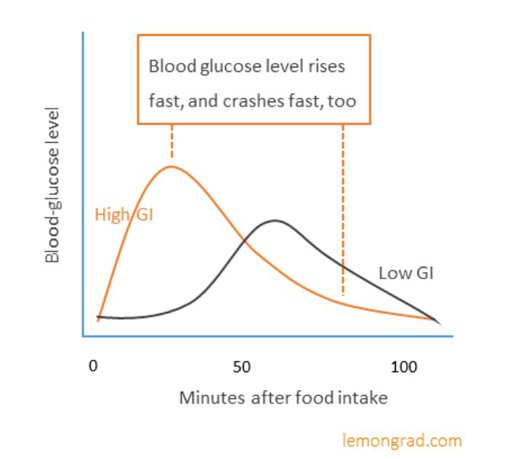 Together with the department for interaction between the Church and society, headed by Archpriest Vsevolod Chaplin, the Synodal Missionary Department has done a lot of work to prepare the concept of a cultural mission among migrants to prevent religious extremism and proselytism. Today we understand that from January 1, 2015, when the law on the mandatory study of Russian, the basics of law, the language and culture of Russia by migrants comes into force, everything must be done so that our cultural mission is aimed at creating peaceful good neighborliness.
Together with the department for interaction between the Church and society, headed by Archpriest Vsevolod Chaplin, the Synodal Missionary Department has done a lot of work to prepare the concept of a cultural mission among migrants to prevent religious extremism and proselytism. Today we understand that from January 1, 2015, when the law on the mandatory study of Russian, the basics of law, the language and culture of Russia by migrants comes into force, everything must be done so that our cultural mission is aimed at creating peaceful good neighborliness.
Archpriest Dimitri Karpenko: people are important personal example of
The main problems of the V All -Church Congress of Diocesan Missionaries were voiced by the Holy Patriarch Kirill in Palerin Planning Planeal Settlements. and it was connected with the fact that the missionary work should be strengthened, and we should see the real fruits of this work. We must move from words to very specific and understandable actions and the results of these actions. We should see what we are striving for in the near future.
We must move from words to very specific and understandable actions and the results of these actions. We should see what we are striving for in the near future.
Therefore, the main topics of discussion in the reports and sections were the topic of parish and church missions and the question of organizing the activities of missionary camps in remote dioceses. These two documents - the Document on the activities of the parish church mission and the Document on the activities of the missionary camps should become key basic documents in missionary work in the near future. In the near future, we should talk about the results of this activity. What exactly was done, what was done, what actions, what was the result. Therefore, the focus was purely specific and even practical.
Each diocese should have a diocesan missionary department, which should organize missionary work in the specific conditions of a particular diocese, taking into account all the features: cultural, economic, social, etc. The department must develop a strategy for its activities . It is for the implementation of this activity that a large-scale task is being adopted, which Patriarch Kirill also spoke about - this is a single map of the missionary field.
The department must develop a strategy for its activities . It is for the implementation of this activity that a large-scale task is being adopted, which Patriarch Kirill also spoke about - this is a single map of the missionary field.
Such a map should exist in every parish, in every diocese, and we also need a general church database of everything that happens in this area. So that we know the real state of things: what kind of sectarian formations exist, schismatic, pseudo-Orthodox... So that each parish knows the field in which it needs to work: what kind of people live, what kind of educational institutions there are, what kind of people have to be addressed with a word about Christ. Such a map, starting from the parish level and ending with the general church, should soon appear. When we see what we have, the work will be made easier. On the other hand, it won't get much easier, because it will become obvious how much work remains to be done.
My opinion is that the very fact of the existence of a church community in a parish is a place where people come to fulfill their religious needs: to pray for something, to ease the owl’s inner state with some personal need. This is understandable and correct, but parish life should not be exhausted by this. If prayer services are regularly performed at this parish, in addition to the private needs of believers, a community will appear. When we say “brothers and sisters”, it should not be a formality and a tribute to tradition, but we really know the names of those people who stand next to us and pray for something of their own. At the same time, it is important for us to be aware of our unity and our involvement in something very important – in the work of saving our souls, which we do together in the Church. When this feeling of a common cause appears, when a real community of like-minded people and fellow believers appears, it will already be missionary work.
This is understandable and correct, but parish life should not be exhausted by this. If prayer services are regularly performed at this parish, in addition to the private needs of believers, a community will appear. When we say “brothers and sisters”, it should not be a formality and a tribute to tradition, but we really know the names of those people who stand next to us and pray for something of their own. At the same time, it is important for us to be aware of our unity and our involvement in something very important – in the work of saving our souls, which we do together in the Church. When this feeling of a common cause appears, when a real community of like-minded people and fellow believers appears, it will already be missionary work.
Because people who don't know Christ yet, don't know the Church, but think and observe something, knowing that there is such solidarity and community of people who call themselves Orthodox Christians, will already receive a certain missionary effect. People are always very important personal example. We say a lot of different words, but when we see an example of another, which we touch, it always turns out to be more important than words. This living example of the living activity of the community will already have a missionary effect. The creation of such communities in each parish is a development priority. It is clear that we will not achieve this in 5-10 years, but this is what we should strive for all our lives on the scale of the entire Church.
People are always very important personal example. We say a lot of different words, but when we see an example of another, which we touch, it always turns out to be more important than words. This living example of the living activity of the community will already have a missionary effect. The creation of such communities in each parish is a development priority. It is clear that we will not achieve this in 5-10 years, but this is what we should strive for all our lives on the scale of the entire Church.
Hegumen Agafangel (Belykh): The mission strategy was given to us in the Gospel
All employees of the Synodal Missionary Department were very encouraged by the beginning of the Congress. The words of His Holiness Patriarch Kirill of Moscow and All Rus' that we need to take more care to attract employees of diocesan departments to the Congress, of course, became a call to action for us. Although, of course, the difference between sending an invitation to an employee of the diocesan department to the congress and sending this employee at the behest of the ruling bishop is obvious.
The congress was very successful. I participated in all congresses, except for the one that took place in 1998. The current one has become one of the most productive. It is important for us that once again people have communicated, the doers have met. Those who are engaged in missionary service according to their calling and the dictates of the spirit.
In addition, it is worth noting the adoption of documents that are responses to the challenges of society. These documents are not prepared texts, but the result of the work of the Congress. With regard specifically to my participation, our section has formulated a draft "Regulations on missionary camps", which will be submitted to the hierarchy. Previously, such a document did not exist, and it will become the canonical justification for the work of missionary camps, which is important.
I am glad that in Moscow it was possible to gather such different people on one platform: Hieromonk Nikon (Belavenets), Archpriest Vsevolod Chaplin and Fr. Andrei Kuraev, Alexander Dvorkin and Arkady Mahler, Sergei Chapnin and many others stayed together, in the same space of our congress. I am glad that such diverse people were given the opportunity to express their opinions within the framework of a peaceful discussion, in the format of good communication.
The strategy of the mission was given to us in the Gospel, Patriarch Kirill said about this, saying that, first of all, the mission is Christ-centered, but tactics change with time and conditions. Missionary practitioners spoke about this, and it was included in the final documents of the congress.
Since you are here...
We have a small request. This story was told thanks to the support of readers. Even the smallest monthly donation helps editorial work and create important content for people.
Even the smallest monthly donation helps editorial work and create important content for people.
Your help is needed now more than ever.
Scott Klingsmith
how Christians in Central and Eastern Europe contribute to the development of the missionary movement. These will be excerpts from Scott Klingsmith's doctoral dissertation, "Factors for the Rise of the Missionary Movement in Eastern and Central Europe," which he defended at Trinity International University in 2002 and kindly allowed to reproduce in the Bulletin. In addition to a thorough analysis of the literature, the author is based on data from 44 interviews he conducted himself, in which 50 respondents from four countries participated. The first of this series of studies, published in this issue of the Bulletin, examines the combined efforts of the Hungarian Reformed and Lutheran Churches sponsoring a missionary couple in India, and also offers food for thought with its critique of missionary tactics here and in the West. Other studies to be published in future editions of the Bulletin will tell the Charismatic Church in Timisoara, Romania, which sponsors two missionary families in Albania, the Polish Bible Missionary Association, which sends missionaries to Central Asia and other regions, and the Romanian Mission International, a broad partnership of missionary organizations. , denominations, churches and training centers, sending missionaries to various parts of the world. A qualitatively new study by Scott Kingsmith deserves serious attention from anyone interested in the development of churches and missions in Central and Eastern Europe. Please note that the statistics refer to 2000-2002.
Other studies to be published in future editions of the Bulletin will tell the Charismatic Church in Timisoara, Romania, which sponsors two missionary families in Albania, the Polish Bible Missionary Association, which sends missionaries to Central Asia and other regions, and the Romanian Mission International, a broad partnership of missionary organizations. , denominations, churches and training centers, sending missionaries to various parts of the world. A qualitatively new study by Scott Kingsmith deserves serious attention from anyone interested in the development of churches and missions in Central and Eastern Europe. Please note that the statistics refer to 2000-2002.
Protestants in Eastern Europe have become missionaries more than once in their history. Between the two world wars, Romanian Baptists had their own missionary organization, and Hungarian Christians became missionaries for the US Southern Baptist Convention (SBC) as well as the German Liebenzeller Mission. In our times, the Campus Crusade for Christ Operation Mobilization and Youth with a Mission are very active in many, if not all, countries of Central and Eastern Europe. In some cases, mainly in New Life, national staff members are also sent on missions to other countries for extended periods of time. Hundreds of young people have already been involved in one way or another in international short-term missions through the organizations The Promise to the World or Youth with a Mission. European Pioneers recently annexed Slovakia as well, placing their headquarters in Budapest. The organization currently has 23 missionaries, many of whom are from Eastern Europe. In addition, from 1990s local churches also became involved in organizing missionary groups.
In some cases, mainly in New Life, national staff members are also sent on missions to other countries for extended periods of time. Hundreds of young people have already been involved in one way or another in international short-term missions through the organizations The Promise to the World or Youth with a Mission. European Pioneers recently annexed Slovakia as well, placing their headquarters in Budapest. The organization currently has 23 missionaries, many of whom are from Eastern Europe. In addition, from 1990s local churches also became involved in organizing missionary groups.
The most famous Hungarian missionary is Maria Molnar, who was killed by the Japanese in the Admiral Islands in 1943. Many other missionaries of the Reformed Church participated in the missions of other organizations. In the 1950s in Hungary, when all missionary activity was prohibited and money could not be taken out of the country, women from the Lutheran Missionary Society made handicrafts that were then sold in the West so that missionaries could receive financial support.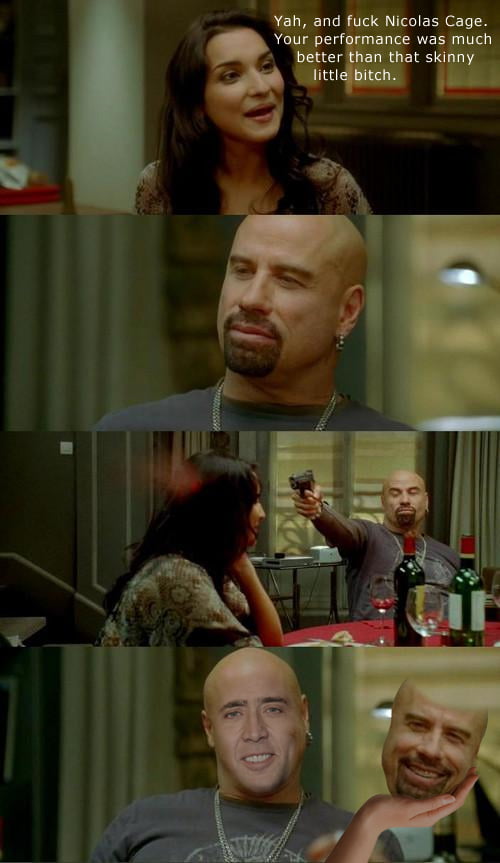 During the years of socialist rule in 19In 74, two missionary families left for Kenya under an agreement between the Reformed Church of Kenya and the Reformed Church of Hungary. One of the men was a theologian and a professor in the theological faculty. The other is an engineer. Some were suspicious of them, not understanding how a Hungarian native could officially become a missionary in 1974. However, their sending was an important milestone, showing the Hungarian church that it can also play an important role in the global community.
During the years of socialist rule in 19In 74, two missionary families left for Kenya under an agreement between the Reformed Church of Kenya and the Reformed Church of Hungary. One of the men was a theologian and a professor in the theological faculty. The other is an engineer. Some were suspicious of them, not understanding how a Hungarian native could officially become a missionary in 1974. However, their sending was an important milestone, showing the Hungarian church that it can also play an important role in the global community.
In the mid-1980s, after some easing of government pressure, the Balint family traveled to Zimbabwe for six years as technical experts for the Lutheran World Federation. Their work in Zimbabwe was not directly related to missionary work, however, the members of the Federation treated them as "real missionaries". After the revolution 19In 89 they moved to Papua New Guinea to help build roads and bridges. They were sent by a trilateral partnership of the Bavarian Lutheran Church, the Lutheran Church of Papua New Guinea and the Hungarian Lutheran Church. Although they themselves are Hungarians, Germany mainly provides them with financial assistance.
Although they themselves are Hungarians, Germany mainly provides them with financial assistance.
Interest in missionary work in the historic churches of Hungary is constantly growing. In 2000, 28 students signed up for the missionary orientation course of the Reformed Gaspard Caroli University. The Reformed Church also organized several missionary training programs. About 100 students study missiology at five Hungarian theological seminaries and universities. Missionaries from mainline churches serve (or have served) in organizations such as the Wycliffe Society for Bible Translation (WBT), Promise to the World (OM), Liebenzell and Neuendettelsau in Central Asia, Ecuador, Peru, Spain, Ukraine, China and on the OM ship." Dulos." About 400 participants arrived for a day of missions for the Lutheran church in western Hungary. 35 Reformed seminary students participated in short-term missions to Romania and Ukraine in 2001.
Undoubtedly, the most influential figure in the intercultural missionary movement in Hungary (at least among representatives of the historical churches) is the Reformed Church missionary from the Netherlands, Anne-Marie Kool. She first came to Hungary in the 1980s. with the mission of the International Society of Evangelical Students (IFES). In order to obtain a visa, she acted as a student and began to collect data for her doctoral dissertation on the history of the missions of the Hungarian Reformed Church. Although she has been repeatedly told that there is very little material on this topic, her research has yielded more results than anyone could have expected, resulting in a doctoral dissertation of more than 1000 printed pages. Almost without exception, the respondents said that her book greatly spurred their interest in missionary work. Anne-Marie Kool's study of the 200-year history of the missionary movement in Hungary helped the Hungarians to see that they could once again repeat their past achievements.
She first came to Hungary in the 1980s. with the mission of the International Society of Evangelical Students (IFES). In order to obtain a visa, she acted as a student and began to collect data for her doctoral dissertation on the history of the missions of the Hungarian Reformed Church. Although she has been repeatedly told that there is very little material on this topic, her research has yielded more results than anyone could have expected, resulting in a doctoral dissertation of more than 1000 printed pages. Almost without exception, the respondents said that her book greatly spurred their interest in missionary work. Anne-Marie Kool's study of the 200-year history of the missionary movement in Hungary helped the Hungarians to see that they could once again repeat their past achievements.
Another area where Anne-Marie Kool has been very influential is the founding of the Protestant Institute for Missionary Studies, an official church program that provides many courses related to missionary work.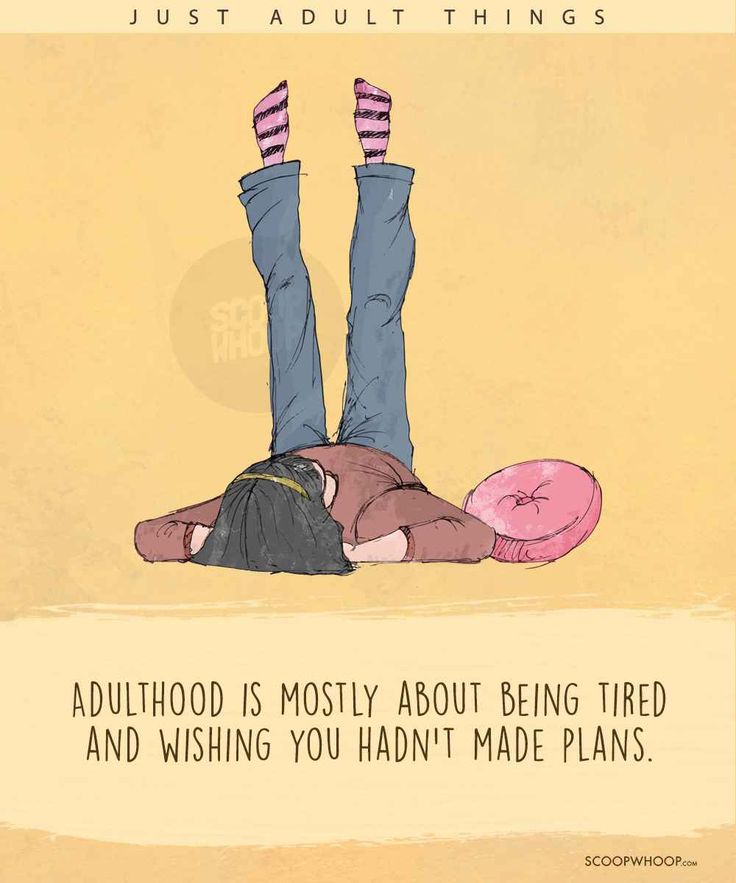 The Institute also sponsors various counseling services that deal with issues such as ministry in big cities, ministry among the gypsies, and so on. Established on the recommendation of a professor at the Reformed Seminary, in consultation with the church and missionary leaders of the Reformed Missionary League of Holland, the Protestant Institute is now the recognized center of missionary life in the historic churches of Hungary, and even, in a certain sense, of the free churches in Hungary. Kool is also a professor at several public universities in Hungary, where she had the opportunity to present her evangelical views. The third area of Kool's activity is due to its exceptional ability to connect people with each other. For example, when the Wycliffe Society was about to start work in Hungary, the employees of the Netherlands Wycliffe Society turned to Anne-Marie for help. She introduced them to many influential figures in the churches, including mission research professors, chief pastors, and sympathetic bishops.
The Institute also sponsors various counseling services that deal with issues such as ministry in big cities, ministry among the gypsies, and so on. Established on the recommendation of a professor at the Reformed Seminary, in consultation with the church and missionary leaders of the Reformed Missionary League of Holland, the Protestant Institute is now the recognized center of missionary life in the historic churches of Hungary, and even, in a certain sense, of the free churches in Hungary. Kool is also a professor at several public universities in Hungary, where she had the opportunity to present her evangelical views. The third area of Kool's activity is due to its exceptional ability to connect people with each other. For example, when the Wycliffe Society was about to start work in Hungary, the employees of the Netherlands Wycliffe Society turned to Anne-Marie for help. She introduced them to many influential figures in the churches, including mission research professors, chief pastors, and sympathetic bishops.
János Boutosy is credited with reviving the missionary vision in Hungary. As a young pastor and evangelist, he was very active during Hungary's spiritual revival after World War II. In 1948 he was sent to Western Europe to study the nature of spiritual awakenings, but was then unable to return to the country. He moved to the United States, defended his doctoral dissertation and became a bishop of the Hungarian Reformed Church. At 19In 90, one of the Hungarian bishops invited him to return to Hungary to teach missiology at the Reformed Seminary in Debrecen, where the chair for the study of missionary work and ecumenism was restored. In the words of Bishop Bolska: "his main task and main thought were missions, missions, missions." He was one of Kool's academic advisors during her doctoral dissertation, and was chairman of the board of founders of the Protestant Mission Study Institute. Butoshi encouraged young people to be interested in learning about missions and getting involved in them personally. He promoted the study and study of missions, but he always emphasized that missionary work was the main task of the church. He was greatly influenced by David Bosch's book Transforming Missions and was able to communicate at a high academic level with leaders of the church and theological institutions. As a professor in Debrecen, he had the opportunity to influence a whole generation of young Reformed pastors. Because he was also chairman of the board of the Protestant Mission Institute, the leaders of the church were forced to reckon with the Institute itself.
He promoted the study and study of missions, but he always emphasized that missionary work was the main task of the church. He was greatly influenced by David Bosch's book Transforming Missions and was able to communicate at a high academic level with leaders of the church and theological institutions. As a professor in Debrecen, he had the opportunity to influence a whole generation of young Reformed pastors. Because he was also chairman of the board of the Protestant Mission Institute, the leaders of the church were forced to reckon with the Institute itself.
In 1999, the Hungarian Reformed and Lutheran churches sent a young couple, András and Arghelika Jo, to serve as school teachers at an international school in Kadaikanal, India, where they teach religious studies, the history of world religions and foundations of moral values. András is a member of the Hungarian Reformed Church, and his wife Angelika is a Lutheran. Both of them studied theology, he - in the Reformed seminary, she - in the Lutheran. In addition, they took an English course together at the Reformed University of Budapest. On October 19In 1998 they met the American missionary David Somer, who taught in the English department of this university. Around this time, they met Ann-Marie Kool, who was also lecturing there. In January 1999, their last year at the university, they also took a six-month mission course at the Protestant Mission Institute in Budapest, where both Kool and Somer taught. Somer then found an opportunity for them to serve at a school in Kadaikanal and potential sponsors in the United States. Summer 1999 András and Angelika began their ministry in India. This is in many ways a unique mission, because the Reformed and Lutheran churches, which usually communicate very little with each other, in this case were able to cooperate.
In addition, they took an English course together at the Reformed University of Budapest. On October 19In 1998 they met the American missionary David Somer, who taught in the English department of this university. Around this time, they met Ann-Marie Kool, who was also lecturing there. In January 1999, their last year at the university, they also took a six-month mission course at the Protestant Mission Institute in Budapest, where both Kool and Somer taught. Somer then found an opportunity for them to serve at a school in Kadaikanal and potential sponsors in the United States. Summer 1999 András and Angelika began their ministry in India. This is in many ways a unique mission, because the Reformed and Lutheran churches, which usually communicate very little with each other, in this case were able to cooperate.
A Reformed Church of America missionary and English teacher at the Reformed University of Budapest, David Somer was a teacher to the Jo family and helped to establish contacts between the American and Hungarian churches. When the Yohs were thinking about continuing their ministry in India, he arranged for them to get help from the Reformed Church of America, and also arranged with one of the schools in India. He led several short-term missions for seminary and university students, mainly to Romania.
When the Yohs were thinking about continuing their ministry in India, he arranged for them to get help from the Reformed Church of America, and also arranged with one of the schools in India. He led several short-term missions for seminary and university students, mainly to Romania.
Almost everyone who was asked this question named the economy as the main obstacle to the development of missionary work among the Hungarian churches. Many consider it incredible that a native of Hungary would be sent to missionary service by the Hungarian church alone. At first, the Hungarian churches may provide little financial support to the missionaries, but in the very near future, the missionaries will begin to need help from Western partners. Many churches are barely able to find the money themselves to pay pastors and repair church premises. Church members have not developed the habit of giving regularly to church needs. Lutheran pastors say one of their main problems is that the church is 90% is funded by the state.
When asked whether the shortfall in giving was due to real economic problems or a lack of church vision, the usual answer was "both." Lack of vision is commonly cited as the reason for the economic weakness of the Hungarian churches, especially in regard to missions. Although the country's economy continues to grow, and many people now live much better than under the communists, their financial situation remains difficult. In addition, materialism is increasingly absorbing the minds of people. Many people are now building their own houses, which requires large financial investments.
For a long time the Lutheran Church has been involved in various missionary projects. For example, for several years in the 1990s. she supported a Finnish missionary who lived in France, working in Marseille with Arab children. They sent her about $200 a year. The church was also able to raise about $500 to buy Bibles for the people of Papua New Guinea. These projects gave the Lutheran church the opportunity to feel like a part of the missionary movement. At the same time, its missionaries in Papua New Guinea are sponsored almost entirely from Germany. A Lutheran church pastor in charge of missionary work says: “Some churches make small donations, I'm not saying there are no donations at all. But I can give you a small example. Together with the Balint family, we visited 30 churches, so we were able to raise money for air travel for the missionaries. Nothing for the work of the ministry. This shows how low our willingness to provide financial assistance is – 30 churches were able to raise money only for plane tickets.” By this he meant that the point is not that the churches cannot give more, they are not ready to give more. “If spiritual revival begins in our churches, financial responsibility will also increase.” He spoke more than once about "sleeping churches" that could give much more if someone could stir them up. "This is a two-way street, we not only give, we also receive - we receive spiritual wealth." One mission leader says, “Our main problem is the pastors.
At the same time, its missionaries in Papua New Guinea are sponsored almost entirely from Germany. A Lutheran church pastor in charge of missionary work says: “Some churches make small donations, I'm not saying there are no donations at all. But I can give you a small example. Together with the Balint family, we visited 30 churches, so we were able to raise money for air travel for the missionaries. Nothing for the work of the ministry. This shows how low our willingness to provide financial assistance is – 30 churches were able to raise money only for plane tickets.” By this he meant that the point is not that the churches cannot give more, they are not ready to give more. “If spiritual revival begins in our churches, financial responsibility will also increase.” He spoke more than once about "sleeping churches" that could give much more if someone could stir them up. "This is a two-way street, we not only give, we also receive - we receive spiritual wealth." One mission leader says, “Our main problem is the pastors. They are already overburdened, so they don’t even want to hear about missionary work. Missions seem to many pastors to be something completely unimportant. They say: this is for Scandinavians, Germans or Americans who have a lot of money. We don't have enough pastors." Visionless people and ecclesiastical bureaucracy that drags out even the simplest procedures cause no activity.
They are already overburdened, so they don’t even want to hear about missionary work. Missions seem to many pastors to be something completely unimportant. They say: this is for Scandinavians, Germans or Americans who have a lot of money. We don't have enough pastors." Visionless people and ecclesiastical bureaucracy that drags out even the simplest procedures cause no activity.
In 1990, immediately after the revolution of 1989, the Lutheran Missionary Society was re-established, which was closed down by the communists in 1952. During communist rule, members of this society continued to informally promote an interest in missionary work, collecting money if possible and calling for prayer for missions. They published self-published articles, spreading the word about the missionary movement in the world, sharing prayer needs, and also met regularly in small groups to pray for foreign missions. Most of the members of the Lutheran Missionary Society, who are now in their 70s, still retain memories of the former, pre-communist times. They realize that now they are already old and have lost their former influence. Young people do not listen to their opinion, and they do not know how to find a common language with the younger generation.
They realize that now they are already old and have lost their former influence. Young people do not listen to their opinion, and they do not know how to find a common language with the younger generation.
The Lutheran Missionary Center, in contrast to the Missionary Society, brings together mainly young people. Lutheran church pastor Peter Ganz is its director. The missionary center sets itself tasks of a rather local character. Although the Center understands the need to participate in international projects, its work is mainly concentrated in Hungary or its neighboring countries. The center publishes a monthly mission magazine and participates in a radio ministry. The magazine features articles on foreign missions, including reports on the ministry of the Yoh and Balint families. Together, the Lutheran Missionary Society and the Missionary Center sponsor five missionary conferences each year for children ages 10 to 14. Every issue of Misszioi magazine has content for children. Both of these organizations see the importance of instilling an interest in missions in the younger generation.
Both of these organizations see the importance of instilling an interest in missions in the younger generation.
Missions in the Reformed Church are mixed. Most people are still very suspicious of the mission department, as for a long time the communists used it to control the church. Although he has not performed these functions for a long time, old stereotypes are forgotten with great difficulty. In addition, because of such a legacy of the past, prejudice against the clergy in general persists. The director of missions is said to have commented on sending the Yohs to India: "We can't send him (András), he is not a minister of the church." But it is obvious that these objections could not become an obstacle to their sending.
The Missionary Department of the Reformed Church is currently occupied almost exclusively with internal projects in Hungary. He sponsors drug rehabilitation centers, a center for disabled children, and reformed schools. There is no official missionary team within the Reformed Church to handle foreign missions. For two or three years now, there has been agitation within the Reformed Church for the creation of their own missionary structure here, and the prospects for such development are very good, but the process is extremely slow. The bishop of the Reformed Church sees the need for such an organization, but so far does nothing in this area. In this regard, the question arose: “What must a person who wants to become a missionary do in order to be sent to the missionary field?” Nobody knows the answer to it. Many ideas were put forward, but there was no clarity in policy and practice. Some argue that this would have to contact an organization abroad - in Germany, Finland or Sweden.
There is no official missionary team within the Reformed Church to handle foreign missions. For two or three years now, there has been agitation within the Reformed Church for the creation of their own missionary structure here, and the prospects for such development are very good, but the process is extremely slow. The bishop of the Reformed Church sees the need for such an organization, but so far does nothing in this area. In this regard, the question arose: “What must a person who wants to become a missionary do in order to be sent to the missionary field?” Nobody knows the answer to it. Many ideas were put forward, but there was no clarity in policy and practice. Some argue that this would have to contact an organization abroad - in Germany, Finland or Sweden.
Churches primarily look to the Protestant Missionary Research Institute for help and advice. The Institute has experienced missionaries with contacts abroad. The churches feel that the staff of the Institute for the Study of Missions has great potential and means to deal with all issues related to sending missionaries. Somer, for example, took over the distribution of the Yo family's prayer letters, although the Lutheran Missionary Center also tried to help, and their letters appeared in several issues of the Misszioi magazine. He also took care of scheduling their meetings during the few weeks that Yoh's family was in Hungary after a year of ministry in India. On this issue, Somer and Kool disagreed. Kool wanted the Hungarians to learn how to cope with such tasks on their own, while Zomer simply saw that help was needed and practically did everything himself. At the same time, it should be recognized that Somer also wants the Hungarians to learn how to solve problems themselves and take care of their missionaries.
Somer, for example, took over the distribution of the Yo family's prayer letters, although the Lutheran Missionary Center also tried to help, and their letters appeared in several issues of the Misszioi magazine. He also took care of scheduling their meetings during the few weeks that Yoh's family was in Hungary after a year of ministry in India. On this issue, Somer and Kool disagreed. Kool wanted the Hungarians to learn how to cope with such tasks on their own, while Zomer simply saw that help was needed and practically did everything himself. At the same time, it should be recognized that Somer also wants the Hungarians to learn how to solve problems themselves and take care of their missionaries.
Of course, the advent of religious and political freedom could not automatically bring with it a change in mentality and attitude towards the world. The effects of 50 years of communist rule can be clearly seen in the old stereotypes about missionary work. Restrictions placed on all types of missionary activity, both within the country and abroad, and today prevent Christians from seeing what is happening outside the walls of their churches. In the communist era, missionary work did not stand out from other activities of the church and did not have an external manifestation. Here is what the pastor of one Lutheran church says about this: “We have experienced difficult decades. Forty years of dictatorship. The word "mission" was practically forbidden. I studied theology in Budapest for five years, but I never took a missiology or mission history course. The official ideology was: “The Church must gradually become obsolete. You can do some things inside the church - lead worship, for example, but outside of it you have no right to conduct any activity. The remnants of such propaganda still live in the minds of some people.
Restrictions placed on all types of missionary activity, both within the country and abroad, and today prevent Christians from seeing what is happening outside the walls of their churches. In the communist era, missionary work did not stand out from other activities of the church and did not have an external manifestation. Here is what the pastor of one Lutheran church says about this: “We have experienced difficult decades. Forty years of dictatorship. The word "mission" was practically forbidden. I studied theology in Budapest for five years, but I never took a missiology or mission history course. The official ideology was: “The Church must gradually become obsolete. You can do some things inside the church - lead worship, for example, but outside of it you have no right to conduct any activity. The remnants of such propaganda still live in the minds of some people.
Some Christians misunderstand the word "mission", perceiving it either as a political action (such as the bombing of Serbia by NATO forces), or in the context of the activities of Western missionary organizations in Hungary. “People think we want to achieve something by force. This word has been misused too often." Most people perceive missionary work as work among ethnic Hungarians abroad. One point of view is: “We must help Hungarians all over the world, especially Hungarian minorities in neighboring countries –
“People think we want to achieve something by force. This word has been misused too often." Most people perceive missionary work as work among ethnic Hungarians abroad. One point of view is: “We must help Hungarians all over the world, especially Hungarian minorities in neighboring countries –
Romania, Slovakia, Serbia and Ukraine. The opposite view is that Christians do not need to travel far from home to conduct missionary work. It sounds like this: "We may not be able to go far, so why don't we preach to Romanians, Slovaks, Bosnians, Albanians or gypsies?" Adherents of this point of view point to the presence in Hungary of "hidden" national minorities, among which there are gypsies, Jews, Arabs and Chinese. Others call for a paradigm shift: mission is about crossing not only geographical boundaries, but also cultural differences. Kool never ceases to remind his Hungarian friends: “Missions exist not only for the Hungarian, but for other peoples. We need to read the Bible while thinking about the many different nationalities.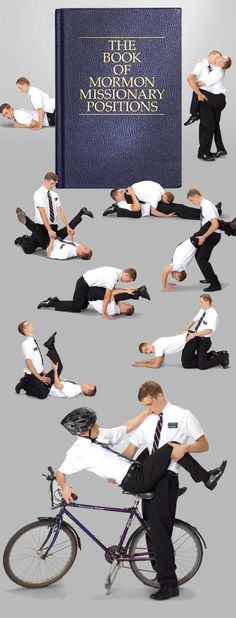 In Matt. 28 given not only the command to baptize, but also to go with the gospel to all parts of the world.”
In Matt. 28 given not only the command to baptize, but also to go with the gospel to all parts of the world.”
Most of the respondents expressed a negative attitude towards the influx of Western, especially American, evangelical missionaries in the last ten years, despite the significant role played by two Western missionaries in the development of the missionary movement in Hungary. This attitude does not seem to be driven by ethnocentrism or prejudice against Westerners, who are generally treated very well by Hungarians. It has more to do with the way Western missionaries behave. The preachers who have recently arrived in the country seem completely unprepared, they do not recognize the legal rights of the historic churches and do not come into contact with the communities and Christians that already exist here. A Lutheran church pastor says: “Many Western missions come without any preparation. They do not know Hungarian. They act like they have to start from scratch.” Churches are concerned with the problem of proselytism. The bishop of the Reformed Church expressed some sympathy for the Orthodox Churches of Romania and Russia, who often complain about the presence of evangelical missionaries who convert those whom these churches consider Christians: "The presence of these people here causes great embarrassment." The historic churches of Hungary are dissatisfied with the behavior of evangelists with what Miroslav Wolf called "fishing in someone else's pond." They believe that the members of their churches should completely shut themselves off from evangelicals, even if these members are completely inactive.
They act like they have to start from scratch.” Churches are concerned with the problem of proselytism. The bishop of the Reformed Church expressed some sympathy for the Orthodox Churches of Romania and Russia, who often complain about the presence of evangelical missionaries who convert those whom these churches consider Christians: "The presence of these people here causes great embarrassment." The historic churches of Hungary are dissatisfied with the behavior of evangelists with what Miroslav Wolf called "fishing in someone else's pond." They believe that the members of their churches should completely shut themselves off from evangelicals, even if these members are completely inactive.
Why did Andras and Angelika Jo go to India? First, several famous people began to talk about missionary work, promoting this idea in influential circles and creating missionary training programs. Secondly, the publication of the history of the Hungarian missions reminded the Hungarian Christians that in the past their country and churches had a lot of experience in organizing foreign missions.